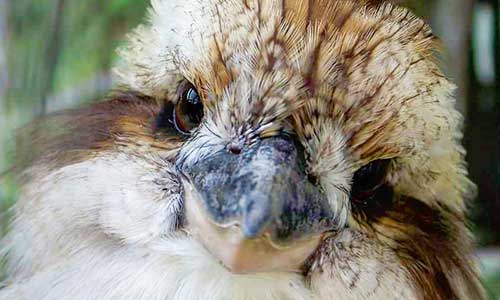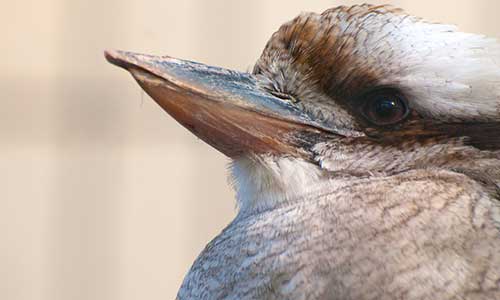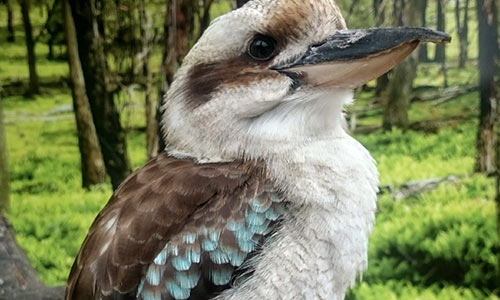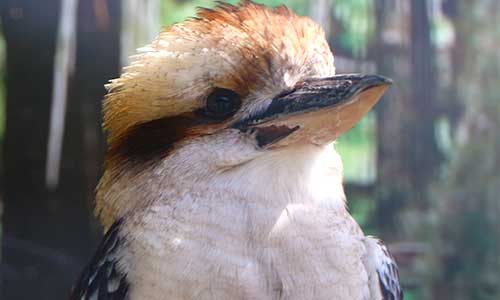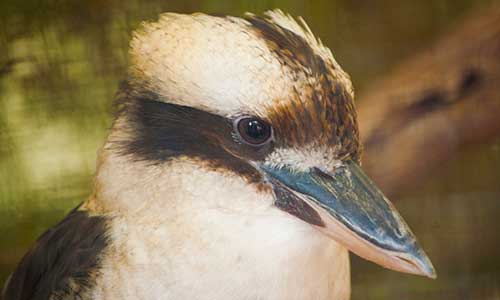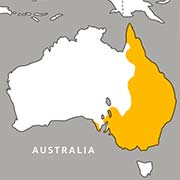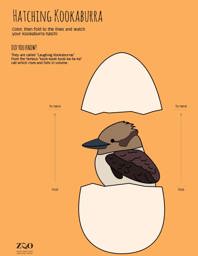Appearance:
The kookaburra is a thick-looking bird with a large head, short neck, and medium-sized tail, with a long, broad-shaped bill that is somewhat flattened. The kookaburra's head is mostly white with brown coloring on top and a brown stripe near the eye. Its chest is cream white colored, with blue-speckled, brown wings. Male kookaburras have a green patch of feathers in the center of the base of their tail.
Size:
- Length: 15.4-18.5 inches
- Weight: 196-465 grams
Diet:
In the wild, kookaburras eat large insects, snakes, lizards, amphibians, small mammals, small birds, and occasionally fish. Prey is caught by pouncing from a perched position. Small pray is eaten whole while larger prey is killed by a swift bash against the bird’s bill or smashed into a tree branch, or onto the ground or rock.
Reproduction:
Kookaburra breeding season is in October. During courtship, the female uses a begging posture like a young bird, while the male offers her his catch of the day along with an “Oo-Oo-Oo” sound. Both the male and female create a nesting area in or around a tree. The female remains in the nest while the male feeds the female about six weeks before she lays her eggs. If their first brood fails, they try for another.
Females lay two to four eggs. Incubation lasts for 25-29 days, and hatchlings are born blind. Hatchlings' eyes don’t open until they are three weeks old. Kookaburra parents feed their young a diet consisting of mainly insects as they remain in their burrow for a full month. They are then coaxed from the nest and able to fly. Parents continue to feed the chicks for several weeks after they emerge from their nest. The kookaburra chicks and parents remain together as a family until the next breeding season.
Behavior:
Kookaburras are territorial, and they will use calls to warn others of danger. Varying calls convey different meanings (stress, happiness, danger, etc.).
Median Life Expectancy:
Up to 11 years
Habitat/Range:
- Habitat: Kookaburras inhabit woodlands, forests, orchards, parklands, timbered farmland, even suburbs and towns.
- Range: The kookaburra is native to eastern Australia, but has been introduced to other parts of the continent and off shore islands such as Tasmania, New Zealand, and south-west of Western Australia.
Fun Facts:
- Kookaburras are the largest member of the Kingfisher family.
- They are called “Laughing Kookaburras” from the famous "kook-kook-kook-ka-ka-ka" call which rises and falls in volume. During this call, families within the Kookaburra’s range will chime in chorus to the call.

